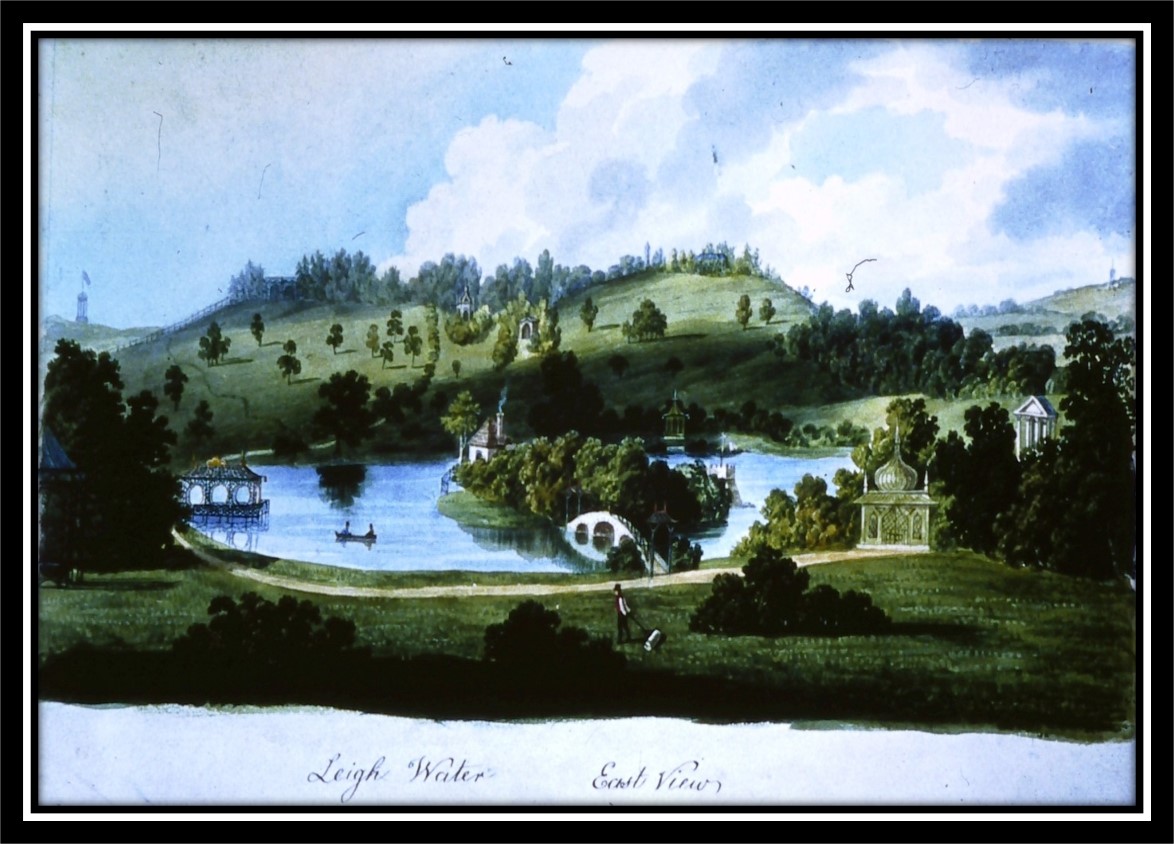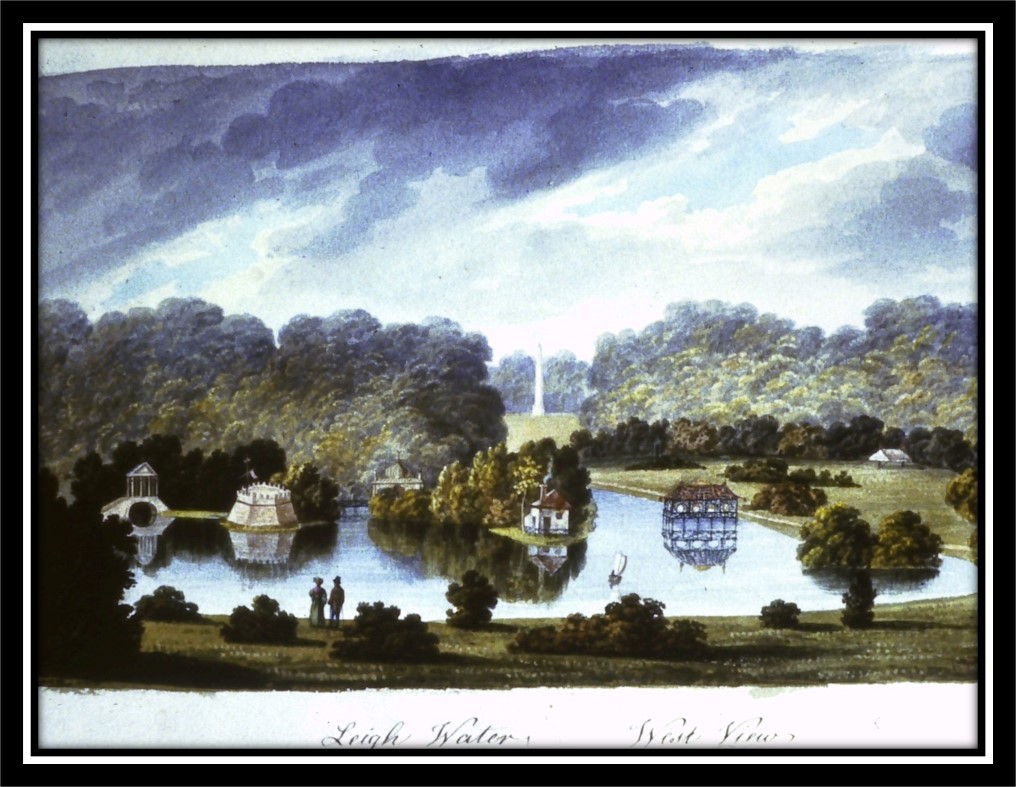The initial construction of the lake, known as Leigh Water, took place between 1828 and 1836. The lake was wholly man-made, dug out by hand using local labourers from the Havant district.
The lake would become the focal point of Staunton’s north gardens with a series of islands, including Cottage Island and Fort Island, ‘upon which a battery has been built of Purbeck Stone, pierced for nine guns, and displaying, on a red pole, the Imperial yellow flag of China’ (Notices of Leigh Park, 1836).
Around the lake were bridges to the islands, as well as 28 other follies placed around the landscape.
A three arched bridge known as the Chinese bridge, which still stands, was built in 1831 and in 1832 two buildings were added; a boathouse built to a Chinese design and a Pergola. In 1834 an ornamental Kiosk (Turkish Summerhouse) was added to the lakeside. It featured an onion dome surrounded by small Minarets. This was followed by other garden features around the lake.
All of the follies around the lake were recorded on several watercolour paintings by Joseph Francis Gilbert in the early 1830s when Staunton had completed the work to the lake and nearby landscape.



